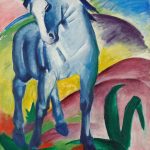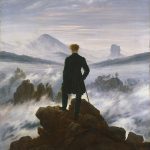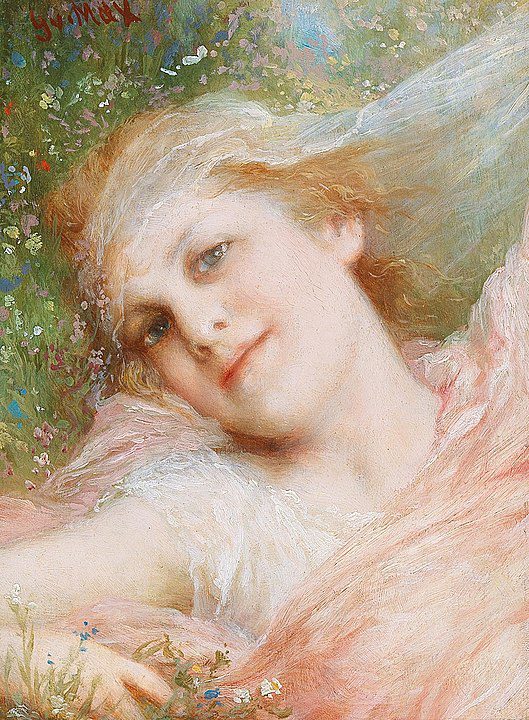
Gabriel von Max wasn’t just any 19th-century painter – he was an eccentric visionary who blended mystical themes with an unusual love for monkeys. His paintings delve deep into the spiritual and the surreal, often featuring both saints and simians on the same canvas. But how did this blend of spiritualism and simian fascination come to be? Let’s explore the life of this strange yet brilliant Symbolist artist.
Early Life in Prague and Vienna (1840-1859)
Gabriel Cornelius Ritter von Max was born on August 23, 1840, in Prague, Bohemia. His father, Josef Max, was a prominent sculptor, so Gabriel was surrounded by art from the start. At the Prague Academy of Fine Arts, he learned drawing and anatomy, which would later influence his symbolic explorations of life and death. His education continued at the Vienna Academy of Fine Arts, a center of both traditional and emerging philosophies. This setting sparked Gabriel’s interest in mystical themes, which became central to his later work.
Developing an Artistic Identity in Munich (1860-1867)
In 1860, Gabriel von Max moved to Munich, where he studied at the Munich Academy under Karl von Piloty, a master of dramatic realism. Max quickly distinguished himself with his unique approach, focusing not only on historical themes but also on spiritual symbolism.
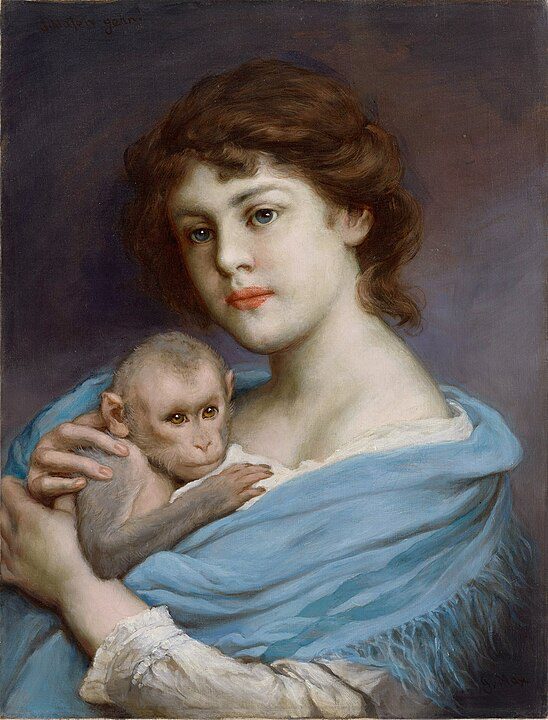
One of his earliest notable works, The Anatomist (1869), portrays a scientist studying a cadaver, symbolizing the quest for deeper knowledge. Max’s early works were characterized by a blend of scientific inquiry and spiritual exploration, setting the stage for his Symbolist career.
Symbolist Beginnings and Spiritual Themes (1868-1875)
By the late 1860s, Gabriel von Max had fully embraced Symbolism, an art movement that sought to represent deeper spiritual realities. His paintings became meditative and surreal, exploring themes like religious ecstasies and otherworldly visions.
One of his standout works, The Ecstasy of St. Theresa (1876), captures a saint in a moment of spiritual rapture, bathed in a mysterious glow. Max was not just painting saints; he was actively participating in spiritual movements like Theosophy, which sought to blend Eastern philosophies with Western mysticism. His friendship with Helena Blavatsky, a leading figure in Theosophy, further influenced his mystical art.
Exploration of Theosophy and Occultism (1876-1885)
Gabriel von Max’s involvement with Theosophy wasn’t just a passing interest; it deeply shaped his work in the 1870s and 1880s. He explored themes like spiritual enlightenment, mystical visions, and religious martyrdom, all reflecting his Theosophical beliefs.
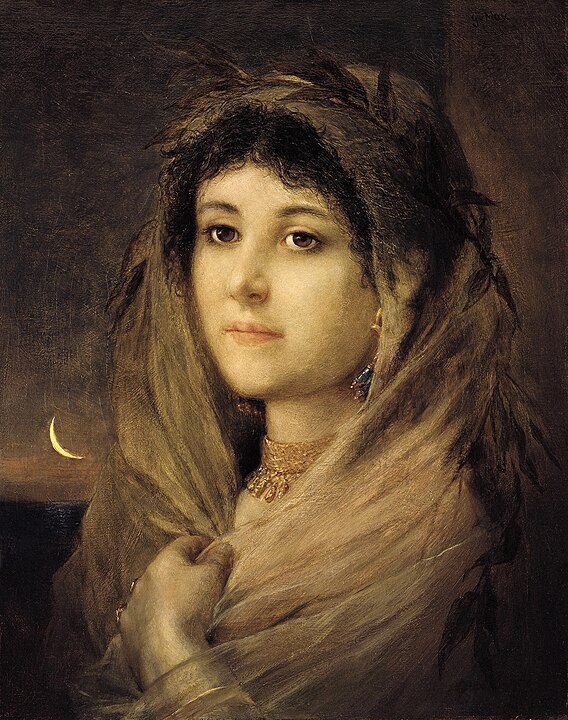
In his painting Christian Martyrs (1885), Max depicted serene saints facing persecution, as if already in touch with the afterlife. His art was not just about capturing physical appearances; it aimed to evoke the spiritual essence of his subjects, making his work both profound and unsettling.
This period marked the peak of Max’s fame. He was recognized as a painter who portrayed both the seen and the unseen, blurring the lines between realism and mysticism. His work was celebrated for its deep symbolism, often inviting viewers to ponder spiritual mysteries.
Monkeys as Symbols and Subjects (1886-1895)
Gabriel von Max’s career took an unexpected turn in the mid-1880s, as he became fascinated with monkeys. He kept several as pets, observing their behaviors and even trying to teach them simple tasks. His home in Munich became a mix of art studio and animal sanctuary.
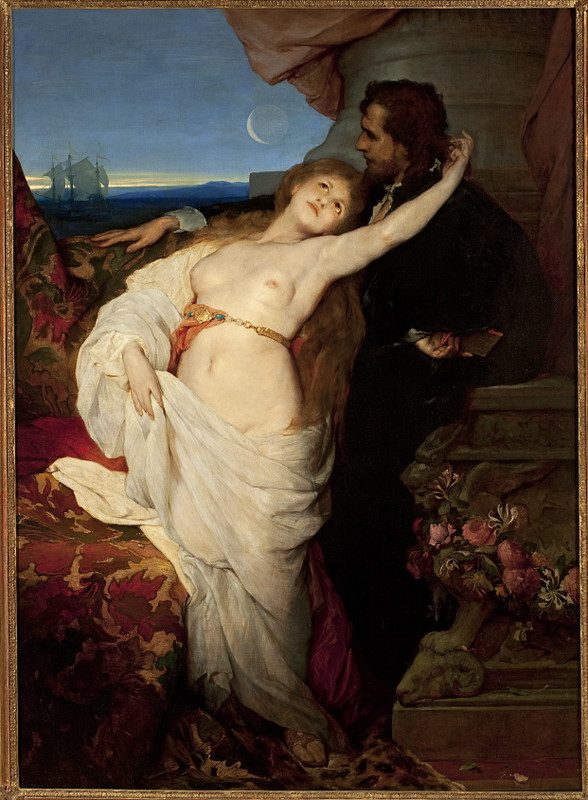
One of his famous paintings, Monkeys as Judges of Art (1889), humorously depicts a group of monkeys critiquing paintings. While amusing, this work also serves as a deeper critique of human nature and the art world. Max saw monkeys as allegorical figures, reflecting humanity’s primal instincts but also capable of profound behavior.
His fascination with monkeys wasn’t purely artistic; it had scientific and spiritual dimensions. Max was interested in Darwin’s theories of evolution and believed that studying primates offered insights into the human soul. This blend of art, science, and spirituality made his monkey-themed paintings both unique and thought-provoking.
Scientific Experiments with Animals (1896-1905)
Gabriel von Max was ahead of his time in animal psychology. He conducted experiments with his monkeys, observing their emotions and social interactions. His interest in animal behavior wasn’t just for artistic inspiration; he believed it could provide insights into human psychology.
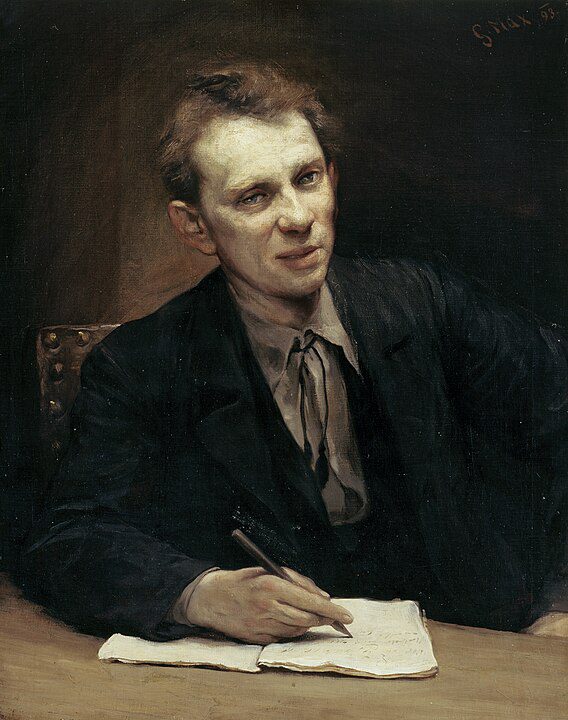
His painting Ape Mother with Child (1900) exemplifies this blend of science and sentiment. It portrays a mother ape holding her child, mirroring human maternal love. Max used these themes to highlight the similarities between humans and animals, showing that emotions transcend species.
Twilight Years and Declining Health (1906-1915)
In his later years, Gabriel von Max’s art became more introspective, shifting from grand spiritual visions to themes of mortality and the soul’s journey. His health was declining, but his passion for spiritual exploration remained strong. His final works, like The Last Vision (1910), portray figures caught between life and death, reflecting Max’s own reflections on mortality.
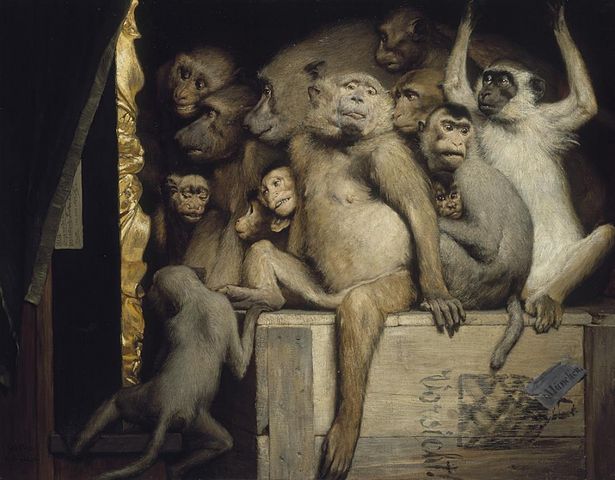
Despite producing fewer paintings, Max continued to write about his theories on art and spirituality. He passed away on November 24, 1915, in Munich, leaving behind a legacy of paintings that challenged conventional artistic boundaries.
The Munich Secession and Artistic Influence
Gabriel von Max was an active member of the Munich Secession, an artists’ movement founded in 1892 to break free from rigid academic traditions. His participation in this avant-garde group reflected his commitment to artistic experimentation. The Secession allowed artists like Max to explore themes freely, leading to more innovative and unconventional works.
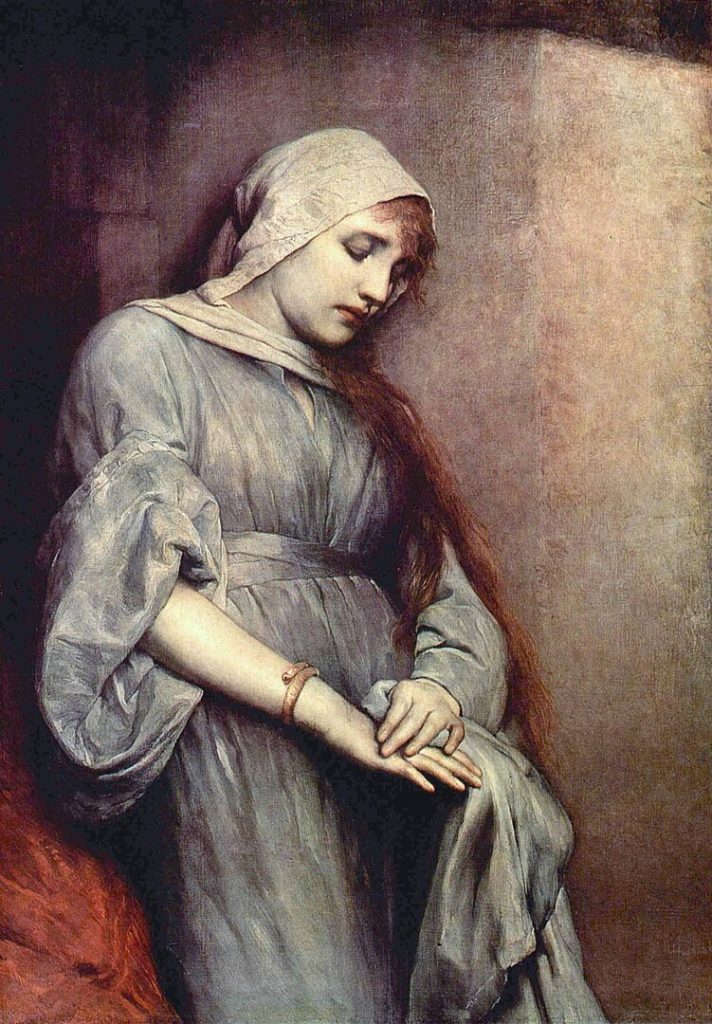
Max’s influence extended beyond his lifetime, inspiring other Symbolists and spiritual artists of the early 20th century. His unique blend of realism, mysticism, and animal symbolism paved the way for more experimental art forms.
Gabriel von Max’s Legacy in Art History
Today, Gabriel von Max is remembered as one of the most eccentric figures in 19th-century art. His paintings continue to intrigue viewers with their blend of mysticism, science, and humor. Max was a true Symbolist, using art to explore deeper spiritual realities, whether through saints, martyrs, or monkeys. His works remain a testament to the idea that the mystical and the material are often intertwined.
Gabriel von Max – A Spiritual Visionary with a Love for Monkeys
Gabriel von Max was not just a painter but a seeker of deeper truths. His art blended spiritual themes with scientific curiosity, making him one of the most unusual artists of the 19th century. Whether capturing the ecstatic gaze of a saint or the playful antics of a monkey, Max’s work invites us to ponder life’s mysteries. As he once said, “Art is the path through which we glimpse the unseen.”
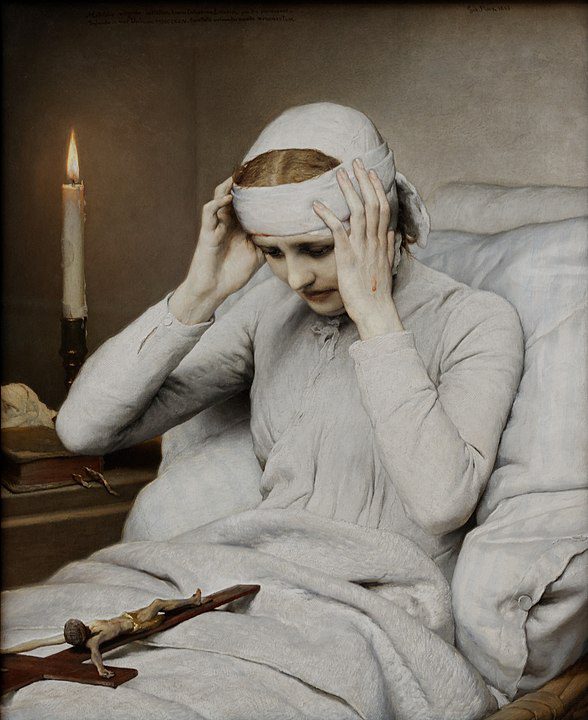
FAQs
- Who was Gabriel von Max?
Gabriel von Max was a 19th-century Austrian Symbolist artist known for his spiritual themes and fascination with monkeys. - What art movement is Gabriel von Max associated with?
Max was a major figure in the Symbolist movement and a key member of the Munich Secession. - Why did Gabriel von Max paint monkeys?
Max painted monkeys as allegories of human behavior, combining scientific and spiritual themes in his works. - What are Gabriel von Max’s most famous paintings?
Notable works include The Anatomist, The Ecstasy of St. Theresa, and Monkeys as Judges of Art. - How did Theosophy influence Gabriel von Max’s art?
Max’s involvement with Theosophy inspired his mystical themes, leading to paintings focused on spiritual ecstasy and religious visions.
Key Takeaways
- Gabriel von Max was a Symbolist painter who explored both spiritual themes and animal symbolism.
- He was an influential figure in the Munich Secession, promoting modernist ideas in art.
- His works are a unique blend of realism, mysticism, and scientific curiosity, making him one of the most intriguing artists of the 19th century.


